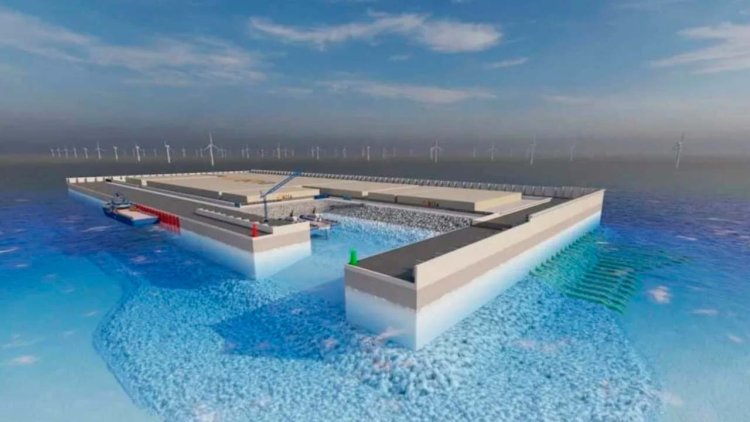Belgium starts building World’s first artificial energy island
The world’s first artificial energy island is being built off the coast of Belgium and will serve as future interconnector between countries as well.

Since September 2023, a team of 300 staff is busy every day at a construction site in Flushing, the Netherlands.
The team is building caissons, or watertight structures, each of which takes three months to construct and is an important component for building Princess Elisabeth Island, the world’s first artificial energy island.
With countries looking to phase out their dependence on fossil fuels, renewable energy solutions like wind and solar energy are seeing a major uptick. Countries in Europe with access to the North Sea are constructing larger wind farms in the cold waters to maximize the energy output from the strong sea winds.
However, supporting infrastructure is also needed to direct the renewable energy produced into our homes as production capacity grows. Belgium plans to develop an artificial energy island closer to the wind farms.
The Princess Elisabeth Island is part of the larger Princess Elisabeth Zone, an offshore renewable energy generation region in the North Sea.
The facility is 28 miles (45 km) from the Belgian coast. It is partly financed by the European Union’s COVID-19 recovery fund, which awarded it a 100 million euro grant.
The facility will serve as an energy grid at sea and see high-voltage energy in direct current (HVDC) and alternating current (HVAC) delivered. The high-voltage infrastructure on the island will combine these inputs to deliver energy to the Princess Elisabeth Zone.
The facility will also serve as the prototype for building hybrid interconnectors in the future, handling energy exchanges between countries and connecting to new and upcoming wind energy farms in the North Sea.
To create the artificial energy islands, engineers will use an estimated 2.3 million cubic meters of sand, and the caissons being built will form the outer walls of the island.
Made of concrete, each caisson is 187 feet (57 m) long, almost 100 feet (30 m) wide, and equally tall. Building one, however, takes three months, with the production process split into five stages, each taking 20 days to complete.
The most impressive of these stages is the slip-forming process, which creates the caisson walls. The walls are raised nearly four inches (10 cm) per hour, and the process continues for ten days.
‘Runners’ move the caissons between different work sites, and the process takes about six hours. When ready, the watertight block weighs 22,000 tonnes.
When a caisson is ready, a semi-submersible vessel will transport it to the harbor to be placed in the water as temporary storage. Later in the summer, the caisson will be moved to its installation site in the North Sea, where construction of the largest energy island is expected to be completed by 2026. Following this, installation of the electrical equipment can begin.
The facility is expected to become operational by 2030.
“The North Sea is set to become the powerhouse of our energy independence, and Princess Elisabeth Island will be a crucial part of this process,” said Alexander De Croo, the Prime Minister of Belgium, on a recent visit to the construction site.
“Belgium has long been a pioneer in offshore wind, and by continuing to innovate, we are further consolidating our position for the future,” the Prime Minister added in the press release.
“This gives our Belgian companies more opportunity to do groundbreaking work, both here and abroad, as well as guaranteeing sustainable, competitively priced energy for our citizens and businesses.”
Source: Interesting Engineering



























